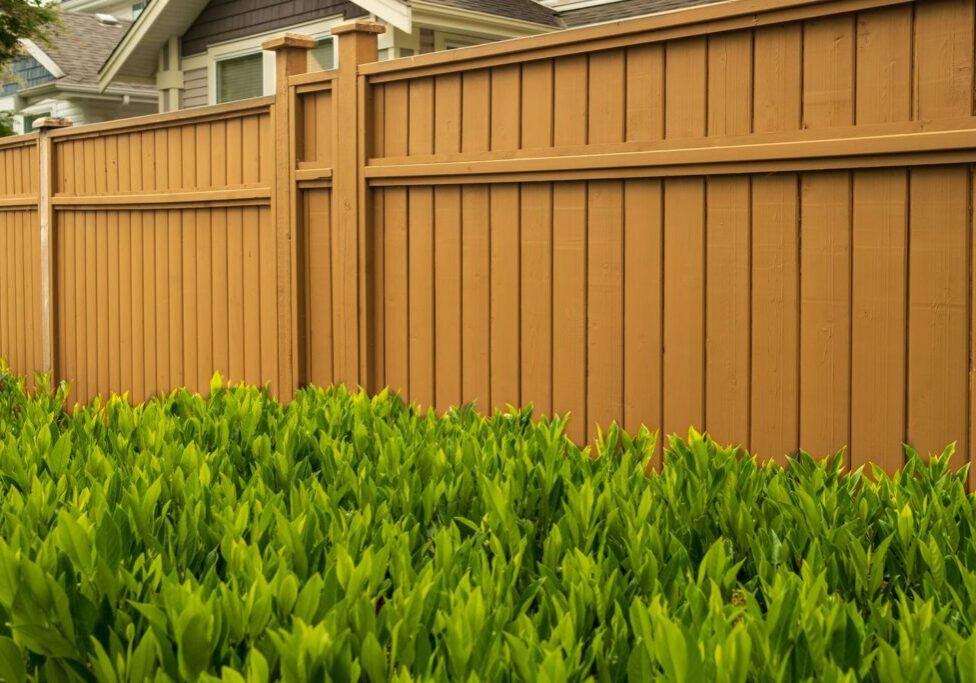
Installing a fence on your property is an excellent way to enhance privacy, security, and curb appeal. However, in Ontario, Canada, there are specific rules and regulations governing fence installation that homeowners must follow. Ensuring your fence complies with local bylaws and respects property lines is essential to avoid disputes, potential fines, and unnecessary modifications. This comprehensive guide will help you navigate property lines and permit requirements for fence installation in Ontario, ensuring a smooth and compliant process.
Determining Property Lines
Before installing a fence, it’s crucial to identify the exact boundaries of your property. Installing a fence on a neighbor’s land, even by a few inches, can lead to legal disputes and costly adjustments. Here’s how to ensure you’re working within your boundaries:
- Check Your Property Survey: A property survey outlines the boundaries of your lot and can often be found in your home purchase documents or obtained through your municipality. This document provides a clear and accurate representation of your property lines.
- Hire a Professional Surveyor: If you cannot locate an existing survey, hiring a licensed surveyor is a wise investment. They will mark your property lines precisely, eliminating any guesswork.
- Communicate with Neighbors: Open communication with your neighbors is essential to avoid conflicts. Discussing your plans and confirming mutual understanding of the property boundaries can prevent disagreements down the road.
Fence Placement Rules in Ontario
In Ontario, there are specific placement rules you must adhere to in order to comply with local bylaws. These rules can vary by municipality, so it’s important to check the regulations in your area. Common placement rules include:
- Fences on Property Lines: In most municipalities, you can build a fence directly on the property line if both neighbors agree to share ownership and costs. If your neighbor does not consent, the fence may need to be constructed entirely on your side of the property line.
- Setback Requirements: Some municipalities enforce setback rules, requiring fences to be placed a minimum distance from the property line if they are solely on your property. This is particularly important for larger structures or fences that might encroach on shared space.
- Height Restrictions: Municipal bylaws typically limit fence heights to 6 feet (1.8 meters) in backyards and 4 feet (1.2 meters) in front yards, though these limits can vary. Exceeding these heights may require a permit or special approval.
- Corner Lots and Sightlines: For properties situated on corners, fences must not obstruct sightlines for drivers. Height and placement restrictions in these areas are often stricter to ensure safety.
Permits for Fence Installation
Not all fence projects require permits, but some circumstances do. Understanding when a permit is necessary can save you time and trouble during the installation process. Here are the general guidelines for Ontario:
- When a Permit is Required: You may need a permit if your fence exceeds the maximum height allowed, includes specific materials such as barbed wire, or is located near utilities, public roads, or watercourses.
- Contact Your Municipality: Always verify with your local bylaw office whether your project requires a permit. They can provide detailed information on requirements, necessary documentation, and the application process.
- Fees and Timelines: Permit fees vary between municipalities, and processing times can range from a few days to several weeks. Planning ahead is essential to avoid delays in your project timeline.
Shared Fences and Cost-Sharing
In Ontario, the Line Fences Act outlines the responsibilities and rights of property owners when it comes to fences built on shared property lines. Key points include:
- Cost-Sharing Agreements: If a fence is built on a shared property line, neighbors are typically expected to share the costs of construction and maintenance. Having a clear agreement in place can help avoid future disputes.
- Dispute Resolution: If neighbors cannot reach an agreement, a local fence viewer appointed by the municipality can mediate the situation. Fence viewers have the authority to make binding decisions regarding the placement, type, and cost of the fence.
Tips for a Smooth Fence Installation Process
To ensure a seamless and successful fence installation, consider these best practices:
- Research Local Bylaws: Familiarize yourself with your municipality’s fencing regulations to avoid potential fines or the need to redo work. Local bylaws often contain detailed specifications on placement, height, and materials.
- Communicate Early: Keeping your neighbors informed of your plans can help build goodwill and prevent misunderstandings, especially if the fence will be on or near a shared property line.
- Hire Professionals: Professional fence contractors are well-versed in local regulations and have the experience to build fences that comply with all requirements. Their expertise can save you time, money, and stress.
- Get Everything in Writing: If you’re entering into a cost-sharing agreement with a neighbor, document the terms clearly. Written agreements can prevent disputes and serve as a reference if issues arise later.
Trust Armour Landscaping for Your Fencing Needs
At Armour Landscaping, we understand that a successful fence installation starts with proper planning and compliance. Our team is knowledgeable about Ontario’s fencing regulations and committed to delivering high-quality, durable fences tailored to your needs. From determining property lines and obtaining permits to constructing a stylish and functional fence, we’re with you every step of the way.
Whether you’re looking to enhance privacy, security, or curb appeal, our fencing solutions are designed to meet your expectations and comply with all local bylaws. Contact us today to learn more about our fencing services and ensure your project is done right the first time.
Post Categories
Complete the form below or give us a call at (647) 646-9876
